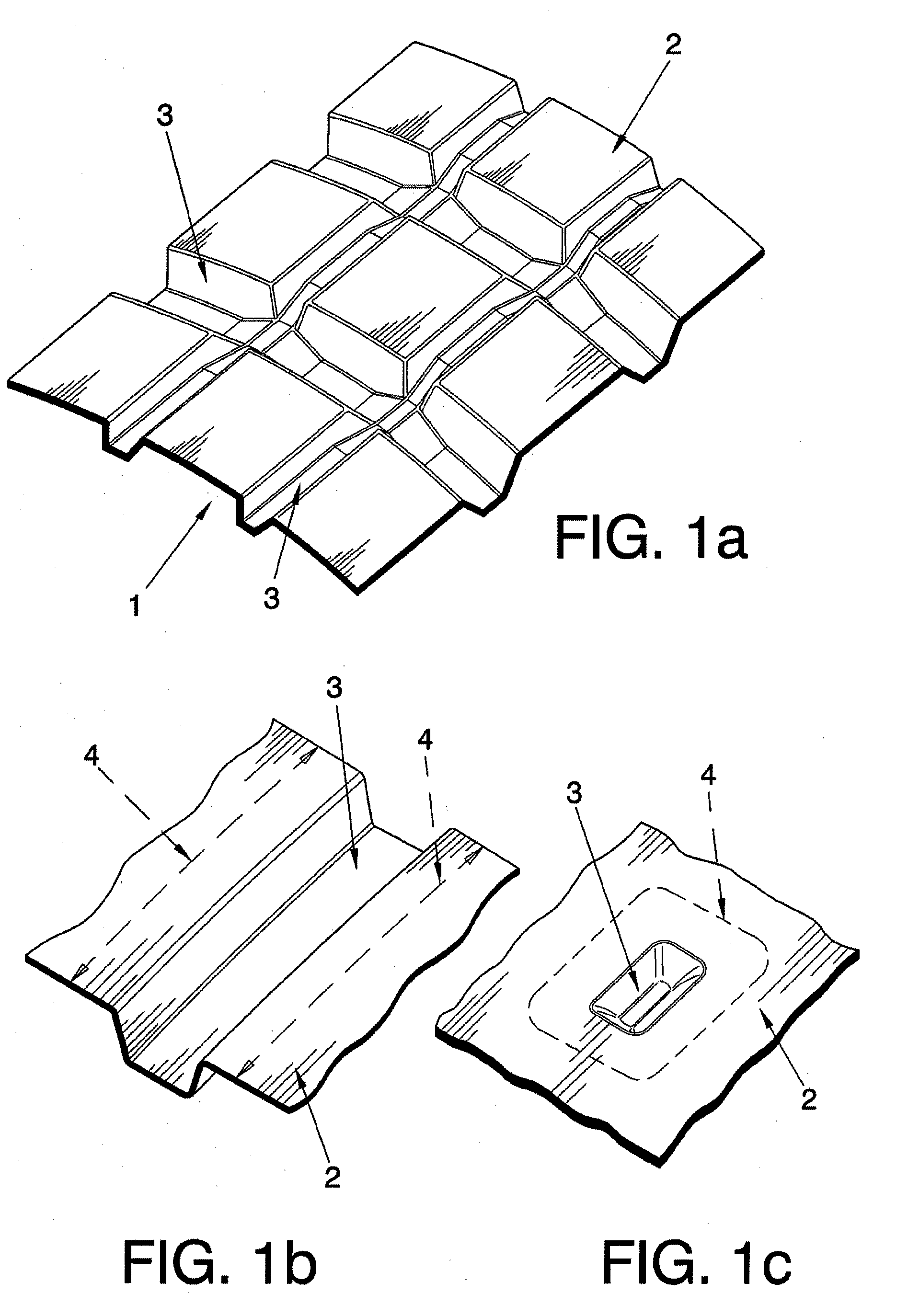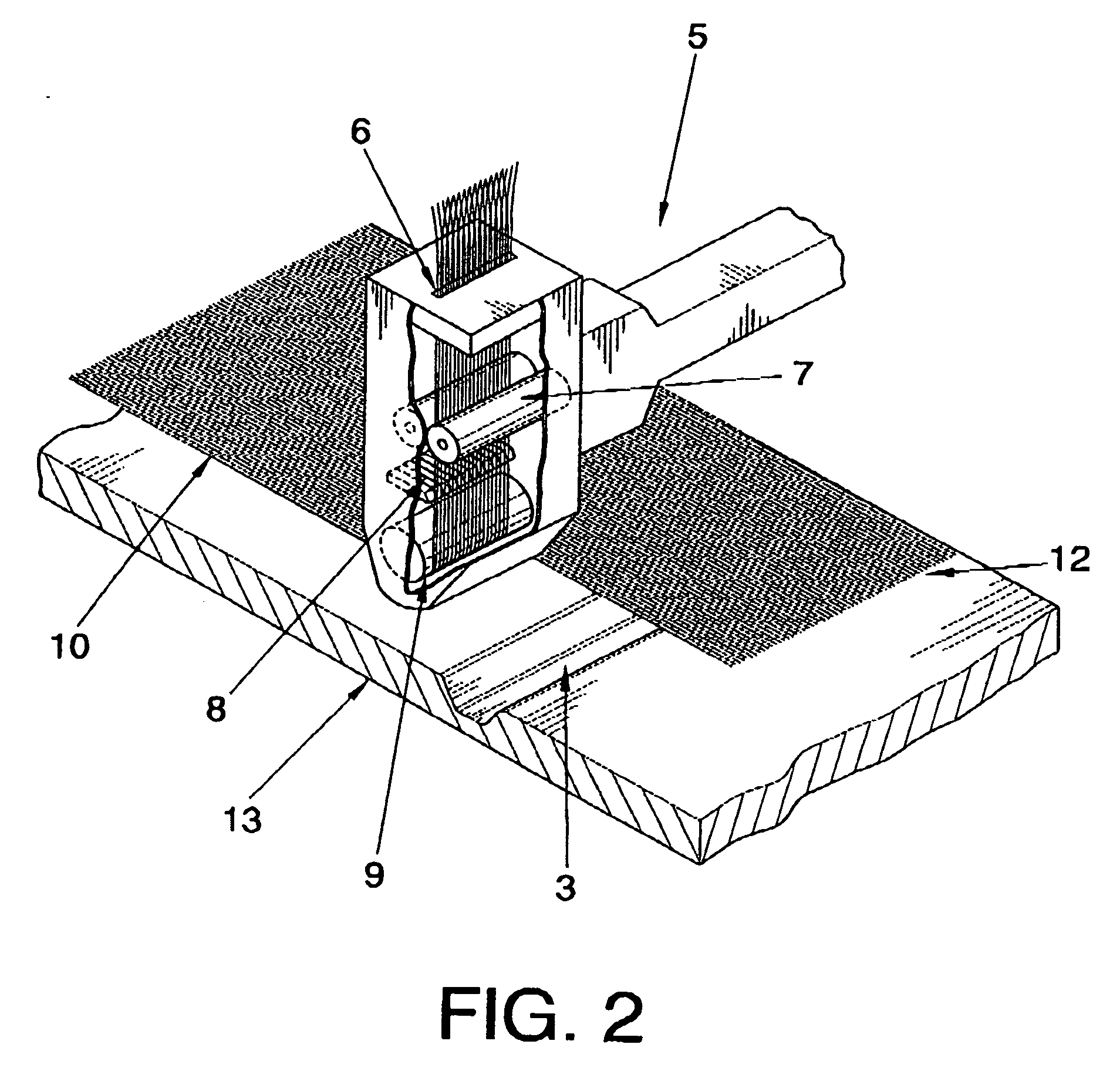Manufacturing method of a complex geometry panel in prepreg composite material
a composite material and complex geometry technology, applied in the field of manufacturing methods of complex geometry panels in prepreg composite materials, can solve the problems of unsatisfactory application of conventional thermoforming and pressing techniques directly to complex geometry panels, method that cannot be applied to panels of closed contour such as cylindrical or conical panels, etc., to achieve maximum mechanical and structural integrity and maximum precision
- Summary
- Abstract
- Description
- Claims
- Application Information
AI Technical Summary
Benefits of technology
Problems solved by technology
Method used
Image
Examples
Embodiment Construction
[0023]As will be described below, the characteristics of the present invention determine that the advocated method, unlike the known art, is applicable on an unlimited basis to obtaining panels in prepreg composite material of sufficiently large size and to obtaining complex geometry panels, having reliefs of more complex shapes than those that can be obtained with the current art. Additionally, the method permits manufacture by means of the automatic pre-impregnating process, using techniques known as “fiber placement” and “automatic tape lay-up”, permitting a high production chain and low cost and assuring that the panels obtained have maximum mechanical and structural integrity and maximum precision in terms of dimensional tolerance.
[0024]The method comprises the following stages: a first stage, known as “stacking”, a second stage known as “forming”, and a third stage known as “finishing”.
[0025]In the first stage, the prepreg is spread over a mold giving rise to the stack. Unlike...
PUM
| Property | Measurement | Unit |
|---|---|---|
| temperature | aaaaa | aaaaa |
| pressure | aaaaa | aaaaa |
| weight | aaaaa | aaaaa |
Abstract
Description
Claims
Application Information
 Login to View More
Login to View More - R&D
- Intellectual Property
- Life Sciences
- Materials
- Tech Scout
- Unparalleled Data Quality
- Higher Quality Content
- 60% Fewer Hallucinations
Browse by: Latest US Patents, China's latest patents, Technical Efficacy Thesaurus, Application Domain, Technology Topic, Popular Technical Reports.
© 2025 PatSnap. All rights reserved.Legal|Privacy policy|Modern Slavery Act Transparency Statement|Sitemap|About US| Contact US: help@patsnap.com



